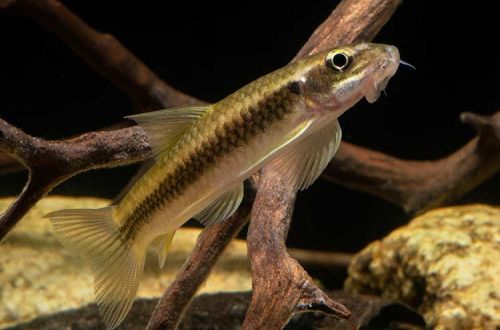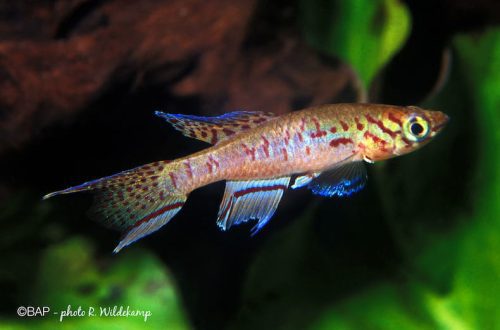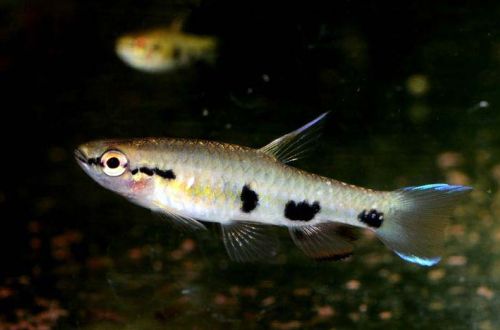
Ceylon garra
Ceylon garra, scientific name Garra ceylonensis, belongs to the family Cyprinidae (Cyprinidae). As the name implies, this fish is endemic to the island of Sri Lanka (formerly Ceylon), located in Asia in the Indian Ocean.

In nature, it is found in mountain streams and fast-flowing rivers. Lives in shallow water in the bottom layer. A typical biotope is a well-lit stream with rocky substrates covered with a layer of algae. Aquatic vegetation is usually absent.
Description
Adults reach a length of about 15 cm. The fish has a short body with elongated fins. The coloration is predominantly grey. The belly is light, and pale yellow shades may appear on the back.
A characteristic feature is the structure of the mouth. The mouth resembles a suction cup, thanks to which the fish is able to stick to any surface, resisting the flow. The “suction cup” also acts as a scraper, allowing micro-organisms to be scraped off snags and stones.
Behavior and Compatibility
Garra Ceylon is considered a rather grumpy fish. In a small aquarium, it is recommended to keep only one adult in the company of other species living in the water column or near the surface. It is noted that in the amount of 2 to 4 they are not able to get along with each other. However, with a population of 5 or more, the behavior changes and they form a stable group.
Brief information:
- The volume of the aquarium – from 250 liters.
- Temperature – 24-26°C
- Value pH — 6.5–7.5
- Water hardness – 5–15 dGH
- Substrate type – sandy, rocky
- Lighting – moderate or bright
- Brackish water – no
- Water movement – moderate or strong
- The size of the fish is up to 15 cm.
- Food – any sinking food
- Temperament – conditionally peaceful
- Keeping alone or in a group of 5 individuals
Maintenance and care, arrangement of the aquarium
The optimal size of the aquarium for a group of 5 fish starts from 250 liters. The size of the tank must be at least 120 cm long. Sand, gravel, various stones, driftwood are used in the design, on the surface of which the placement of aquatic mosses and ferns is acceptable.
Water quality is of key importance for long-term maintenance. Being a native of flowing waters, the Ceylon Garra is sensitive to the accumulation of organic waste and the concentration of dissolved oxygen. The aquarium should be equipped with a productive filtration system, which will not only provide water purification, but also be able to create an internal current – an imitation of a mountain stream. A good addition to the filter will be the additional installation of an aeration system. Do not forget about the weekly replacement of part of the water (40-50% of the volume) with fresh water.
It is worth remembering that the fish with the help of suction cups are able to climb the wall of the tank and crawl out. Take care of a reliable lid for the aquarium.
Food
In nature, it feeds on microorganisms that inhabit the layer of algal film covering stones and driftwood. For this reason, there is an erroneous opinion that this species is exclusively herbivorous. The fish does consume plant material, but it is concomitant.
The basis of the diet should be feed with a high protein content. It can be either sinking flakes, granules, or live or frozen foods (brine shrimp, bloodworms, daphnia, etc.).





